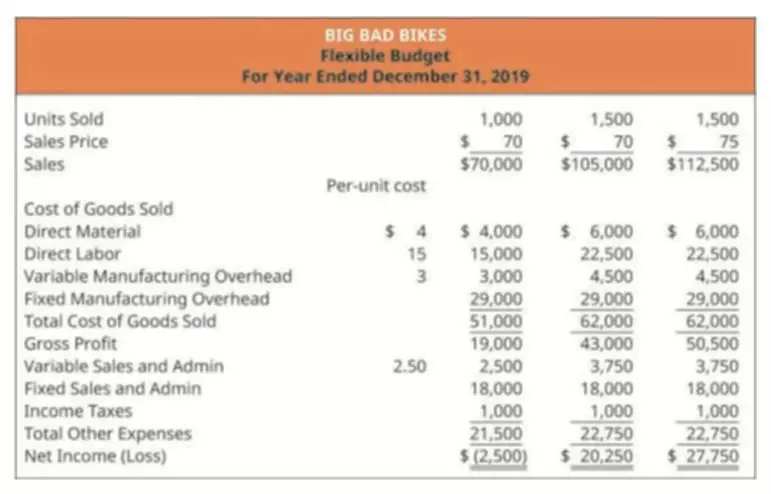Contribution Margin Ratio Accounting for Managers
Content

Another great way to increase sales is by bundling items together. While it might be great to sell all those grill accessories separately, offering them in a bundle could make things simpler for the customer and motivate them to purchase everything contribution margin ratio formula all at once. Of course, we all want a contribution margin as close to 100 percent as possible, but that’s not likely. Most businesses operate at a less than 50 percent margin, but it won’t be the case on every product or service.
- In many cases, those 10 percent margin products are lead magnets, while the larger margin item is an upsell.
- A key characteristic of the contribution margin is that it remains fixed on a per unit basis irrespective of the number of units manufactured or sold.
- Fixed costs, as the name says, remain fixed regardless of the level of production of the company.
- Management will use the contribution margin to understand what price they should charge for a product at the very least, in order to not lose money.
- A negative contribution margin means that you’re losing money with every sale of the product in question.
- That is, it refers to the additional money that your business generates after deducting the variable costs of manufacturing your products.
Fixed costs are production costs that remain the same as production efforts increase. Variable costs, on the other hand, increase with production levels. Adding these variable costs up, Pup n Suds spent $20,900 on variable costs. If we subtract that from the $40,000 they brought in through sales, we know that they have $19,100 left over to cover fixed costs . So if variable costs go up or down depending on how your business does that month, what are fixed costs? Whether you have a great month or a terrible month, you’ll still need to pay all your software subscriptions, rent, and phone bills. Variable costs also live on the income statement, but they’re not as easy as net sales to find.
Contribution Margin Example
This is a special income statement that separately lists the variable costs and the fixed costs incurred by a business. It basically gives a clearer picture of how the company’s expenses are structured and what contribution is given by each unit sold by the company that in turn goes toward covering the company’s fixed costs. The variable costs of the company, as well as its contribution margin, can be compared year to year to pick out any trends and show how the profits of the company behave over time. Using the above information the contribution margin per unit is $14 (the selling price of $20 minus the variable manufacturing costs of $4 and variable SG&A expenses of $2). Therefore, the contribution margin ratio is 70% (the contribution margin per unit of $14 divided by the selling price of $20). Once the $31,000 has been covered, 70% of the revenues will flow to the company’s net income. While a profit margin is the difference between the total sales revenue and the total costs of the business, the contribution margin is a lot more specific.

He is the sole author of all the materials on AccountingCoach.com. Cut through the noise and dive deep on a specific topic with one of our curated content hubs. Hearst Newspapers participates in various affiliate marketing programs, which means we may get paid commissions on editorially chosen products purchased through our links to retailer sites.
Quick Tips: Avoid These Mistakes When Calculating Contribution Percentage or Margin
These are predictable costs, and that’s why we use our margin to pay fixed costs because we know how much they’re going to cost each month and how much money we’ll need to pay them and still have profit left over. It’s important to understand the contribution margin ratio formula because it helps identify changes in your margins and determine the source of the problem. Understanding the finances behind your business can help you increase your profits, cut back on expenses, and operate more smoothly. Contribution margin ratio is one of these financial terms that sounds more complicated than it is. In this article, we’ll cover how to calculate it, what it means, and how to improve it. Investors and analysts use the contribution margin to evaluate how efficient the company is at making profits.

Extending your delivery time, charging for faster delivery, or speeding up production could save you a bundle. During the investigation, figure out ways to offset the additional cost in other areas. Improving your onboarding process, providing better customer service, and offering incentives to long-term customers can all help improve retention. As your business grows, you can determine how much it will cost you to acquire a new customer. This will happen when your business develops a duplicatable system for driving in new business. The list could go on, but it’s all part of being a business owner. Understanding how to identify issues with your margin isn’t always easy, but we can help you if you’re struggling.
What is the Contribution Margin Ratio?
In other words, fixed costs are not dependent on your business’s productivity. Furthermore, the variable costs can be either direct or indirect. Direct Costs are the costs that can be directly identified or allocated to your products. For instance, direct material cost and direct labor cost are the costs that can be directly allocated with producing your goods. Furthermore, an increase in the contribution margin increases the amount of profit as well. When preparing to calculate contribution margin ratio, you will need to add together all of your variable expenses into one number. If expenses for producing products or paying for services are cutting into your margins, it might be time to look deeper.
Variable expenses are costs that change in conjunction with some other aspect of your business. Cost of materials purchased is a variable expense because it increases as sales increase or decreases as sales decrease. The main drawback of the contribution margin formula is that it leaves business owners with a dollar amount. Luckily, there are a few other ways to look at contribution margin that can help business owners look at their overall contribution margin and product-specific margins with more objectivity. When taking a look at how your business is doing financially, it’s tempting to focus all your attention on the “bottom line.” In other words, are you turning a profit or not? If the answer is yes, many business owners might stop there, pat themselves on the back, and vow to keep doing more of the same. And the things you’re doing now may not continue to work as the business grows.
It is good to have a high contribution margin ratio, as the higher the ratio, the more money per product sold is available to cover all the other expenses. Variable costs fluctuate with the level of units produced and include expenses such as raw materials, packaging, and the labor used to produce each unit. The result of this calculation shows the part of sales revenue that is not consumed by variable costs and is available to satisfy fixed costs, also known as the contribution margin. The contribution margin is different https://quickbooks-payroll.org/ from the gross profit margin, the difference between sales revenue and the cost of goods sold. While contribution margins only count the variable costs, the gross profit margin includes all of the costs that a company incurs in order to make sales. Contribution margin , or dollar contribution per unit, is the selling price per unit minus the variable cost per unit. “Contribution” represents the portion of sales revenue that is not consumed by variable costs and so contributes to the coverage of fixed costs.
- If expenses for producing products or paying for services are cutting into your margins, it might be time to look deeper.
- This is one of several metrics that companies and investors use to make data-driven decisions about their business.
- These are not committed costs as they occur only if there is production in the company.
- This metric essentially shows you how much money you’ll earn on each sale, once the cost of producing that item has been subtracted.
- The key to using the formula above is to find only the revenue that comes from sales of a specific product or product line, along with that product’s specific variable costs.
